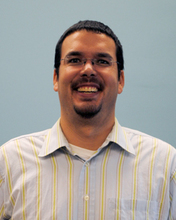
Vanderbilt University
Dan Morrison's recap of a Regular Session on the Sociology of the Body: Meaning Making and the Social Body at #ASA15, organized by Mary Nell Trautner. Carla Pfeffer, Discussant.
I had a fantastic time at ASA this year. That is not my typical ASA experience. Most often, my ASA is filled with status anxiety and a keen sense of the hierarchies and exclusions that unfortunately characterize our discipline. It might be my training in interactionism that helps me to think through encounters at ASA as a kind of ritualized performance characterized by deference, affiliation, and a sharp distinction between the most visible (generally, senior scholars) and least recognized (graduate students, those with less prestigious affiliations), including the struggle for movement between these relative positions. The sessions I heard this year helped me think through ASA as a series of social worlds, each with their own logics and structures.
I certainly was not expecting to be intellectually engaged throughout the (admittedly few) sessions that I attended. Yet that's exactly what happened. I want to highlight, in particular, the vibrant energy surrounding the paper session that Mary Nell Trautner (ASA Bodies Council member and Associate Professor at Univ. at Buffalo) organized with a superb discussant, Carla A. Pfeffer (ASA Bodies and Embodiment Secretary/Treasurer and Assistant Professor at the University of South Carolina). I want to tell one story about the Session on the Sociology of the Body: Meaning Making and the Social Body.
We had three papers and plenty of time to discuss them with Dr. Pfeffer. I'm going to recap the first two papers using some of the tweets that I sent during the session. I understand that this practice is somewhat unusual, but it was the final day of the conference and I wanted folks outside the room to get a sense of what they were missing!
First up was Apryl Alexis Williams (@AprilW) from Texas A&M University. In her paper, "Fat People of Color: Creating Counter-Narratives Online" Williams discusses the creation and policing of body-positive spaces on the web, what she calls the "fatosphere". She targeted two sites, "This is Thin Privilege" and "Fat People of Color" for her research. In the few tweets below, I tried to capture some of her most intriguing findings:
Asia Friedman (University of Delaware) was next to present:
After we gave our papers, Dr. Pfeffer gave important and critical comments, highlighting the connections between the papers and the unique contribution of each.
It was during the Question and Answer period that I knew the panelists' work had found the right audience. Although there were less than a dozen people in the audience, the questions we received were clearly focused on our work -- they had been listening! Dr. Pfeffer served as a great moderator, and the panelists got several good questions, including at least one from Kjerstin Gruys, a Body and Embodiment Nominations Committee member, and from the panelists themselves.
It is great to be a part of such a generous, dynamic, and intellectually engaging section. I look forward to many more years of growth in our section. Many thanks to Dr. Trautner and Dr. Pfeffer for their excellent work!

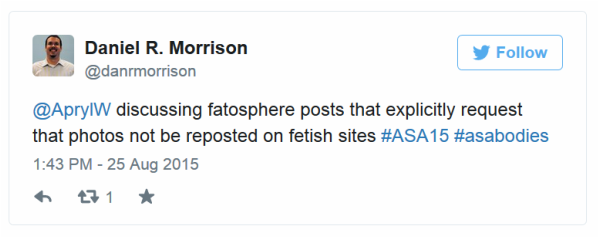
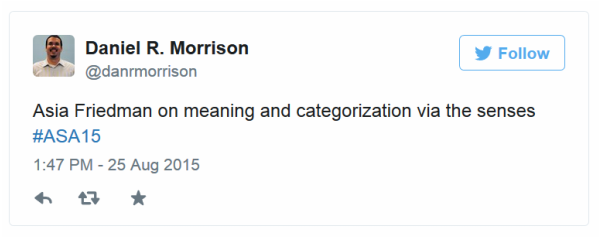
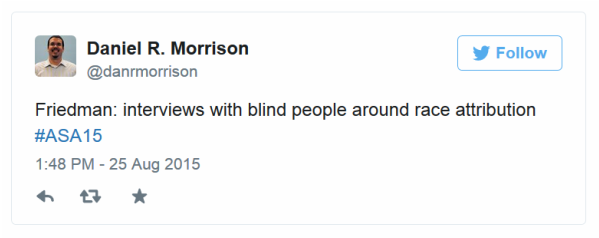
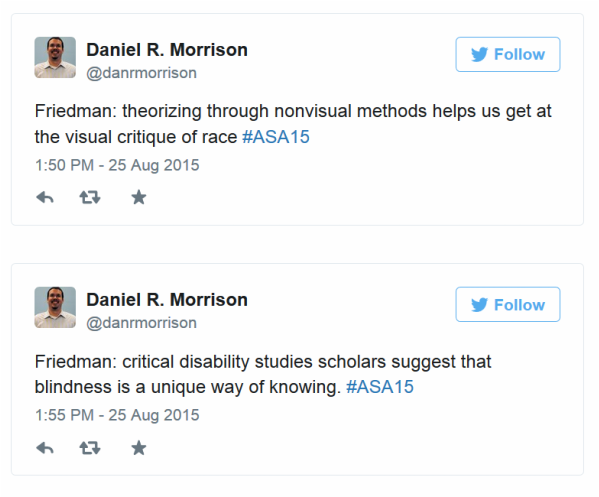
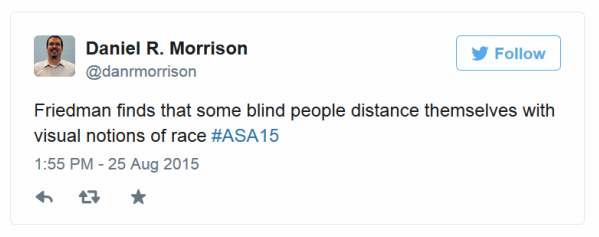
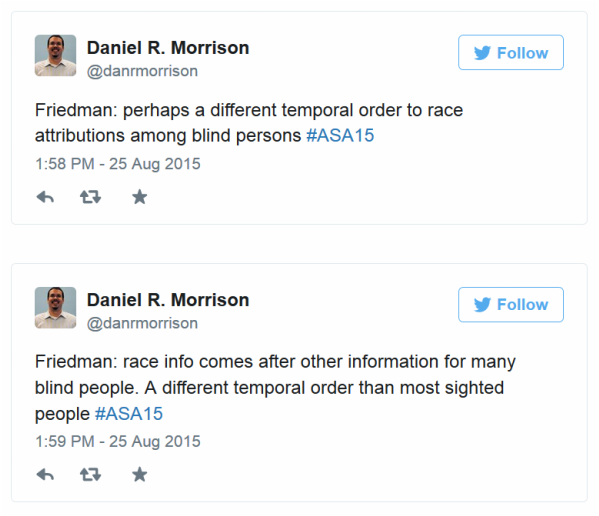
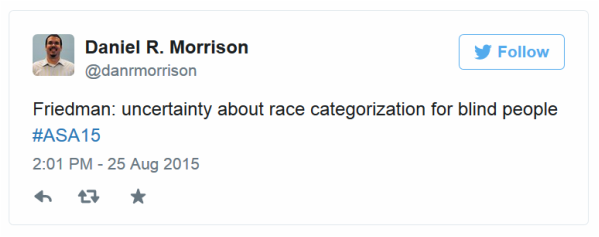
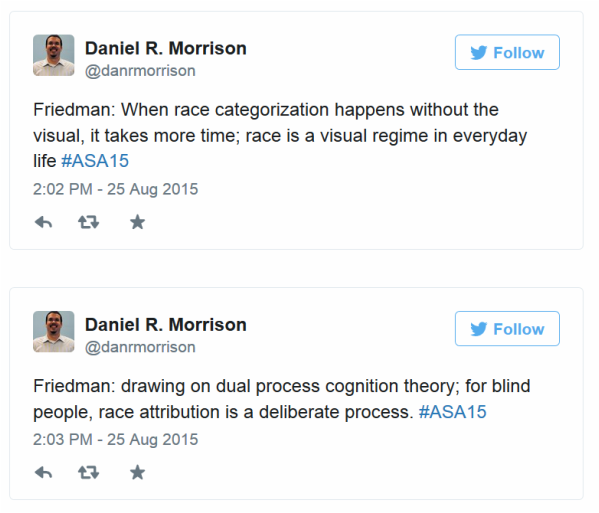
 RSS Feed
RSS Feed
